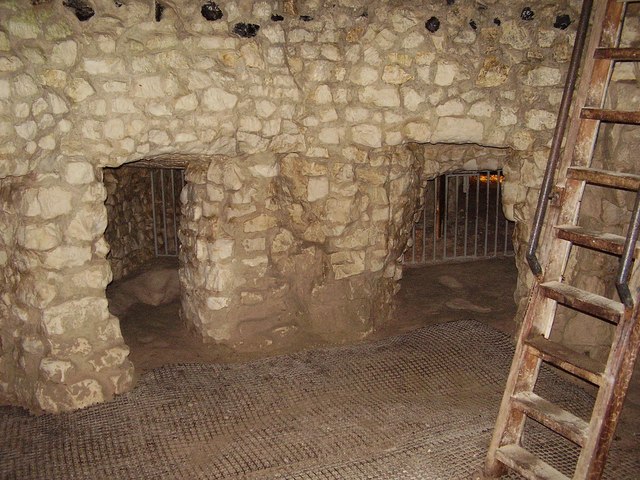In this extra issue of Applied Bushcraft this month Martin tells us a bit about the use of flint and the function of firearms.
Flint, no spark without fire!
If the only link you can make between flint and weapons, is
a lump of it lashed to a wood or bone handle by a strip of leather and being
wielded by a stocky man dressed in skins or even the beautifully crafted
arrowheads found on historic sites around the globe, then you have missed a
vital piece of weapons history!
A vital piece of firearms history revolved around flint. Now
I'm sure that you have seen Ray Mears and Bear Grills starting a fire with a
flint and steel, well the same principle was used to ignite a charge of black
powder in a ‘flint lock’ weapon to propel a not very sophisticated projectile
from its barrel.
All ‘barrelled weapons’ work on the same basic principle
i.e. a projectile (ball, bullet or charge of shot) is launched out of a tube
(barrel) by the detonation of an explosive charge. In modern weapons, a
cartridge will contain all of the necessary components to achieve this in a
single unit. In the case of a rifle or pistol firing a single projectile, the
bullet will be firmly retained in the neck of the cartridge, behind that will
be a carefully measured charge of explosive or propellant and in the base of
the cartridge will be a primer or initiating charge, which will detonate the
main charge and drive the bullet down the barrel and onward to its target. The
primer these days will invariably be struck by a firing pin and its shock
sensitive contents thus detonated and initiating the whole process.
.JPG) |
| Modern cased ammunition |
In bygone years, the barrel would have been ‘charged’ with a
carefully measured portion of black powder, a felt wad may have been carefully
and firmly tamped down on top of that to keep it in place before a single ball
or charge of shot would be placed on top of the charge, this in turn would have
been tamped into place and retained in position with a ‘top wad’. The clever
bit was a small touch hole from the base of the barrel (containing the charge
of black powder) to the ‘pan’. The pan was literally that, a shallow tray
containing a small amount of black powder, strategically placed ahead of a steel
striker plate which was in turn, placed in the path of a spring driven flint.
Gun Flints; © Marie-Lan Nguyen / Wikimedia Commons, via Wikimedia Commons
When the trigger was pulled, the flint would fly forward and
strike the steel, the spark thus generated would ignite the powder in the pan
and flash through the hole to ignite the primary charge and send the projectile
or projectiles on their way. On occasion, a damp charge of powder or a blocked
flash hole, would prevent the whole cycle working as planned and a ‘flash in
the pan’ would occur (a term used today to describe an incomplete task or false
start) when only the pan charge would ignite and leave the primary charge and
its projectile still in the barrel.
Of the many critical components in this process, the subject
of my little article today, is the humble flint and millions of them would have
been collected and shaped for the weapons industry of yesteryear.
In Suffolk, the beautiful woods and heathland of the Brandon
Estate, owe much of their fortune to the income derived from the industrial
scale collection of flints for the British and other armies of the world, who
were then dependant on flintlock weapons as their primary defence. This lovely
little town and the surrounding area has Pubs bearing the name ‘The Flint Knappers’ alluding to the industry and
process of shaping a flint. Flint can be flaked in to an incredibly sharp edged
tool and smaller shards are almost as good as a scalpel for intricate cutting
tasks.
By Sydney Barber Josiah Skertchly [Public domain], via Wikimedia Commons
Even before the use of flint in firearms, flint was
mined as far back as the neolithic period and ‘Grimes Graves’ is well worth a visit if
you are in the area.
A view from the bottom of Grimes Graves byAshley Dace [CC BY-SA 2.0], via Wikimedia Commons
Flint is a hard, sedimentary form of the mineral; quartz, It is cryptocrystaline in structure meaning that the crystals which form it are so minute that their structure is vague even under a microscope. It is categorized as a variety of chert; another stone suitable for knapping. It occurs most often as nodules in sedimentary rocks, such as chalks and limestone. Once broken open flint is usually dark
grey, black, green, white or brown in colour, and often has a glassy appearance. A thin layer or 'cortex' on the outside of the nodules is rough and often chalky.
So that’s what to
look for when you visit an area rich in flint but if you want to try your hand
at flint knapping and making modern day flint arrow heads, wear eye protection!
Gaining an appreciation for its sharpness by getting a piece in your eye, is
not recommended, oh, and you’re going to cut your fingers too. Enjoy the history,
enjoy the outdoors, go find flint!
MRG






No comments:
Post a Comment
Note: only a member of this blog may post a comment.